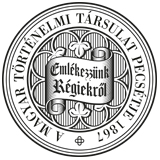Századok – 2004
Tanulmányok - Pálffy Géza: Koronázási lakomák a 15–17. századi Magyarországon. Az önálló magyar királyi udvar asztali ceremóniarendjének kora újkori továbbéléséről és és a politikai elit hatalmi reprezentációjáról V/1005
KORONÁZÁSI LAKOMÁK A 15-17. SZÁZADI MAGYARORSZÁGON 1101 right to nominate the Hungarian carvers, although the basic political institution of the common nobility, the lower chamber of the parliament, was also authorised to send some „representatives". Consequently, their lists of 20-40 persons (see Appendix I) rather faithfully reflect the contemporary Hungarian political elite and its social reservoir. The ceremonial of the coronation banquets thus incorporated, alongside its traditional elements, all the influences of Burgundián and Spanish origin chanelled by the court of Vienna, which necessarily accompanied Hungary's integration into the Habsburg Empire after 1526. As a result of this process the kingdom of Hungary became a dominant member of the new Central-European monarchy, and as such, as archduke Maximilian put it to his father, Ferdinand I in May 1563, „it certainly enjoys some precedence over the other countries of your imperial majesty". These words were reflected in the ceremonial of the Hungarian coronation banquets. For in the political representation the greatness, European importance and old traditions of the medieval Hungarian kingdom were at least as influential as the imperial efforts at centralisation in Hungary, justified by the defence of the empire's eastern frontiers and the provision of the imperial capital, which seriously affected Hungary's sovereignty. They did not exclude each other and were finally reconciled in a compromise between Vienna and the Hungarian political elite. In the appendix of the study the author publishes I. the sitting orders of the coronation banquets from the period between 1527 and 1712 and the database of the participants; II. The German sitting order of the festive banquet held by Ferdinand I at Székesfehérvár on 3 November 1527 (Kurbayern, Äusseres Archiv Nr. 4441., 31. Oct. 1527.); III. lastly the Hungarian-Latin-German vocabulary of the coronation banquets.
